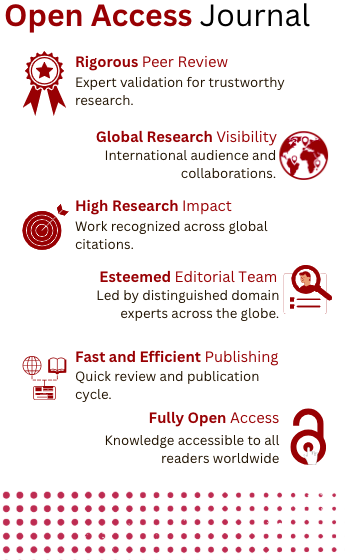Survey on Online Signature Verification Using Deep Learning Models
DOI:
https://doi.org/10.5281/zenodo.8068161Keywords:
Time-aligned-recurrent-neural-network (TARNN), LSTM layer, state-of-the-art.Abstract
A critical step in authentication and security is online signature verification. In recent years, signature verification methods have significantly improved thanks to the quick development of deep learning. An overview of deep learning-based online signature verification is provided in this work. In this paper, we introduce a time- aligned recurrent neural network (TARNN)-based method for online signature verification. By matching the signature image in time and feeding it to the TARNN model, the suggested approach captures both static and dynamic aspects of the signature. A fullyconnected layer for classification follows a bidirectional LSTM layer in the TARNN model. The system is tested againstcommon benchmark datasets after being trained on a sizable dataset of real and fake signatures. The suggested system achieves state-of-the-art performance in online signature verification, according to experimental results. The technology can be utilized for trustworthy and effective signature verification in a variety of applications, including banking, security,and online shopping.References
Li, G., & Sato, H. (2020, July). Handwritten signature authentication using smartwatch motion sensors. In 2020 IEEE 44th Annual Computers, Software, and Applications Conference (COMPSAC) (pp. 1589-1596). IEEE.
Behera, S. K., Dash, A. K., Dogra, D. P., & Roy, P. P. (2018, August). Air signature recognition using deep convolutional neural network-based sequential model. In 2018 24th International Conference on Pattern Recognition (ICPR) (pp. 3525-3530). IEEE.
Mukherjee, P., & Viswanath, P. (2019, September). A light weight and hybrid deep learning model based online signature verification. In 2019 International Conference on Document Analysis and Recognition Workshops (ICDARW) (Vol. 5, pp. 53-58). IEEE.
Ren, Y., Wang, C., Chen, Y., Chuah, M. C., & Yang, J. (2019). Signature verification using critical segments for securing mobile transactions. IEEE Transactions on Mobile Computing, 19(3), 724-739.
Tanwar, S., Obaidat, M. S., Tyagi, S., & Kumar, N. (2019). Online signature-based biometric recognition. Biometric-based physical and cybersecurity systems, 255-285.
Parziale, A., Diaz, M., Ferrer, M. A., & Marcelli, A. (2019). Sm-dtw: Stability modulated dynamic time warping for signature verification. Pattern Recognition Letters, 121, 113-122.
Jain, A., Singh, S. K., & Singh, K. P. (2020). Handwritten signature verification using shallow convolutional neural network. Multimedia Tools and Applications, 79, 19993-20018.
Khan, A., Shahid, F., Maple, C., Ahmad, A., & Jeon, G. (2020). Toward smart manufacturing using spiral digital twin framework and twinchain. IEEE Transactions on Industrial Informatics, 18(2), 1359-1366.
Bibi, K., Naz, S., & Rehman, A. (2020). Biometric signature authentication using machine learning techniques: Current trends, challenges and opportunities. Multimedia Tools and Applications, 79(1-2), 289-340.
Xia, Z., Shi, T., Xiong, N. N., Sun, X., & Jeon, B. (2018). A privacy-preserving handwritten signature verification method using combinational features and secure kNN. IEEE Access, 6, 46695-46705.
Syed Thouheed Ahmed, S., Sandhya, M., & Shankar, S. (2018, August). ICT’s role in building and understanding indian telemedicine environment: A study. In Information and Communication Technology for Competitive Strategies: Proceedings of Third International Conference on ICTCS 2017 (pp. 391-397). Singapore: Springer Singapore.
Ahmed, S. T., & Basha, S. M. (2022). Information and Communication Theory-Source Coding Techniques-Part II. MileStone Research Publications.
Singh, K. D., & Ahmed, S. T. (2020, July). Systematic Linear Word String Recognition and Evaluation Technique. In 2020 International Conference on Communication and Signal Processing (ICCSP) (pp. 0545-0548). IEEE.
Downloads
Published
How to Cite
Issue
Section
License
Copyright (c) 2023 Madhushree, Poornima G J, Roopa Banakar

This work is licensed under a Creative Commons Attribution-NonCommercial-NoDerivatives 4.0 International License.







